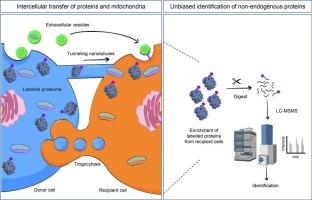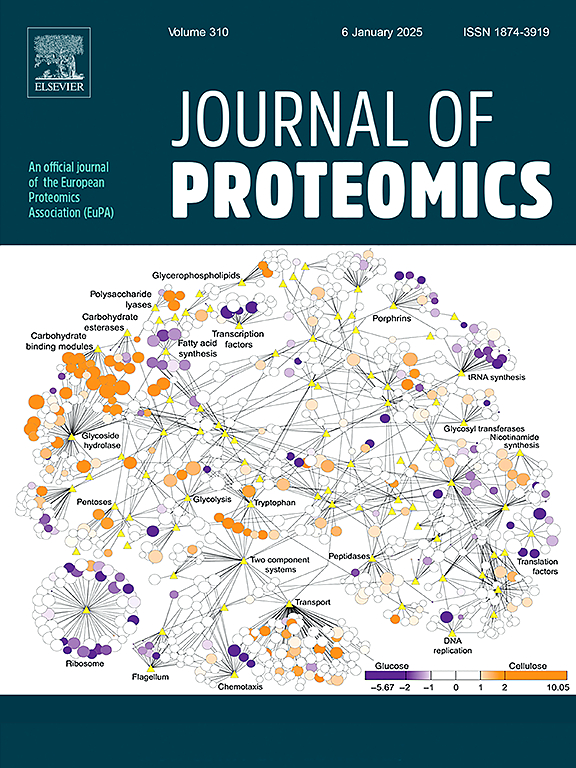Intercellular transfer of proteins and mitochondria - the contribution of proteomics
IF 2.8
2区 生物学
Q2 BIOCHEMICAL RESEARCH METHODS
引用次数: 0
Abstract
One of the mechanisms of intercellular communication is the transfer of proteins and organelles among cells. This has been observed in diverse phylogenetic groups, and can be mediated by extracellular vesicles, like exosomes or exophores, tunneling nanotubes, pores like plasmodesmata or processes like trogocytosis. The vast majority of studies in this field have used confocal microscopy and flow cytometry to detect proteins from donor cells in recipient cells. Proteomics has not been widely used, despite the fact that efficient tools are available for the labeling, enrichment and unbiased large-scale identification of the transferred proteins. Among these tools are trans-SILAC, affinity capture-MS/MS, BONCAT, TransitID and the use of cells from different species. In this review we describe illustrative examples of the intercellular transfer of proteins and mitochondria indicating the experimental methodologies used, both proteomics and non-proteomics, and emphasizing the capabilities of the mass spectrometry-based strategies.

蛋白质组学的贡献:蛋白质和线粒体的细胞间转移。
细胞间通讯的机制之一是细胞间蛋白质和细胞器的转移。这已经在不同的系统发育群体中观察到,并且可以通过细胞外囊泡(如外泌体或外胞囊)、隧道纳米管、孔(如胞间连丝)或过程(如胞浆形成)介导。该领域的绝大多数研究都使用共聚焦显微镜和流式细胞术来检测受体细胞中供体细胞的蛋白质。尽管有高效的工具可用于标记、富集和无偏的大规模鉴定转移蛋白,但蛋白质组学尚未得到广泛应用。这些工具包括trans-SILAC,亲和捕获-MS/MS, BONCAT, TransitID和使用来自不同物种的细胞。在这篇综述中,我们描述了蛋白质和线粒体的细胞间转移的说明性例子,表明了所使用的实验方法,包括蛋白质组学和非蛋白质组学,并强调了基于质谱的策略的能力。
本文章由计算机程序翻译,如有差异,请以英文原文为准。
求助全文
约1分钟内获得全文
求助全文
来源期刊

Journal of proteomics
生物-生化研究方法
CiteScore
7.10
自引率
3.00%
发文量
227
审稿时长
73 days
期刊介绍:
Journal of Proteomics is aimed at protein scientists and analytical chemists in the field of proteomics, biomarker discovery, protein analytics, plant proteomics, microbial and animal proteomics, human studies, tissue imaging by mass spectrometry, non-conventional and non-model organism proteomics, and protein bioinformatics. The journal welcomes papers in new and upcoming areas such as metabolomics, genomics, systems biology, toxicogenomics, pharmacoproteomics.
Journal of Proteomics unifies both fundamental scientists and clinicians, and includes translational research. Suggestions for reviews, webinars and thematic issues are welcome.
 求助内容:
求助内容: 应助结果提醒方式:
应助结果提醒方式:


